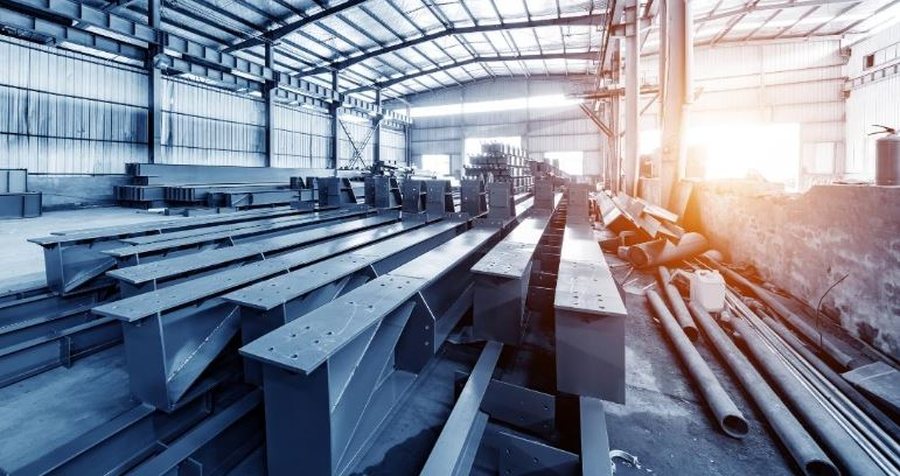Why are metals at the center of Trump's ideology? - 50% tariffs aim to "revive" the American economy

The Trump administration's steep 50% tariffs on steel, copper and aluminum imports are not just economic measures, they are also political. They reflect the US president's desire to revive American industries that were once dominant in these sectors. Economic analysts explain that Trump has often expressed dissatisfaction with the shift of production of these metals outside the US, which was the global dominant country in the 1980s. Later, copper production shifted to Chile, while steel and aluminum production shifted to China.
Trump has considered steel and aluminum to be the pillars of American strength. During his first term in office, in 2018, he stressed that "a strong steel and aluminum industry is essential to national security." According to him, the sector has been the target of unfair attacks from foreign trade practices, which have led to the closure of factories and the loss of millions of jobs. Trump promised that this would end.
In terms of copper, the US imports about half of its total consumption, mainly from Chile and Canada. Meanwhile, the doubling of steel and aluminium tariffs to 50% from 25% has significantly increased the prices of these metals in the US market, eliminating cheaper imports and creating instability for producers. Higher costs and supply shortages are forcing US companies to review their investments and change supply chains.
However, the effectiveness of tariffs in boosting domestic production remains to be seen, as Trump's measures in the last term did not bring significant growth. In 2024, US steel production was 1% lower than in 2017, while aluminum production fell by about 10%.
Recent analyses show that Trump's tariffs could increase production costs by up to 4.5%, hitting low-margin sectors like electric cars and home appliances, as well as delaying investment in key US manufacturing hubs.
For most of the 20th century, the United States was the world's leading producer of copper, until Chile replaced it in American dominance. In steel production, the United States peaked in the early 1970s before a decline that was deepened by multiple recessions. Similarly, a strong dollar made foreign steel cheaper, while American factories faced aging equipment and rising environmental costs. In aluminum, the United States was the world leader for most of the 20th century, due to cheap electricity and high demand from the defense, aviation, and automotive industries. But in the early 2000s, China surpassed it in this sector.
The 50% tariffs on copper, steel and aluminum are expected to hit industries that rely heavily on these metals, such as construction, defense and green technologies. According to analysts, it is the American industries themselves that will suffer the main impact of these measures.

EU suspends countermeasures against US - Decision faces criticism from European officials
The European Union (EU) will suspend two packages of planned countermeasures against United States tariffs for six months, following an agreement with the......

The “paradox” of Greek businesses - High number of small and medium-sized enterprises, but low productivity
Greece ranks among the EU countries with the highest number of small and medium-sized businesses in relation to population, but at the same time their......

Trump threatens India with 'punitive' tariffs - Warns of measures on Indian goods due to Russian imports
President Donald Trump said he would "substantially" increase tariffs on India because the country still imports Russian oil. "India is not only buying large......

Mountains Package, 3308 applications in E-albania - Shkodra, the region with the highest interest. Durrës, only 96 applications
More than 3,300 citizens have applied so far for the Mountain Package. This initiative undertaken by the government has aroused high interest since the......

Over 580 thousand undeclared euros / The Tax Administration sheds light on the case of an entity in Tirana!
The General Directorate of Taxes has announced the disclosure of a case of fiscal evasion of 585,000 euros undeclared, over more than a year, discovered by......

National Investment Scheme 2025: New opportunities for farmers, agro-processors and the agritourism sector!
The National Investment Scheme 2025 has opened new opportunities for farmers, agro-processors and entrepreneurs in the agritourism sector. This initiative,......

Housing with 0% interest, the loan is subsidized by the state - Gonxha: Ease of affordability for special categories
The government has approved a decision that allows for 0% interest loans, subsidized by the state budget for housing. The program aims to facilitate the......

Albanians prefer long-term savings - BoA: Deposits up to 2 years, with the largest increase in June
Many citizens choose to keep their savings in the bank for a long time. The latest data from the Bank of Albania shows that the majority of Albanians prefer......



















